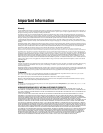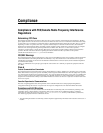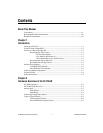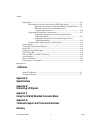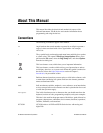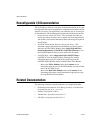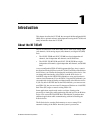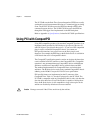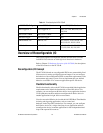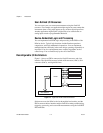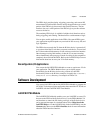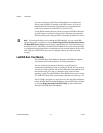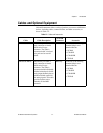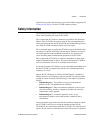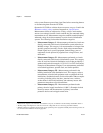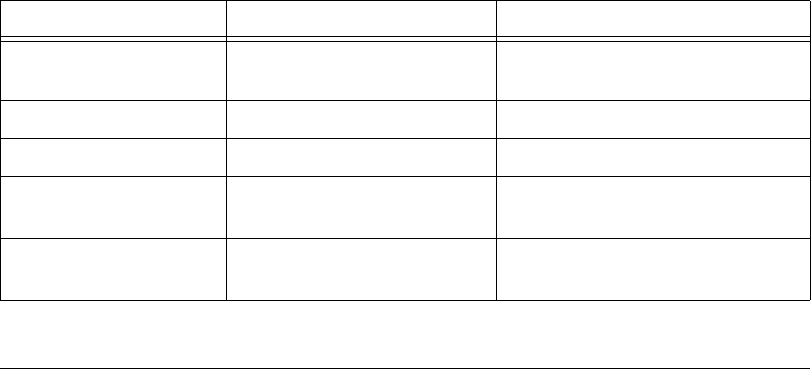
Chapter 1 Introduction
© National Instruments Corporation 1-3 NI 783xR User Manual
Overview of Reconfigurable I/O
This section explains reconfigurable I/O and describes how to use the
LabVIEW FPGA Module to build high-level functions in hardware.
Refer to Chapter 2, Hardware Overview of the NI 783xR, for descriptions
of the I/O resources on the NI 783xR.
Reconfigurable I/O Concept
The NI 783xR is based on a reconfigurable FPGA core surrounded by fixed
I/O resources for analog and digital input and output. You can configure
the behavior of the reconfigurable FPGA to match the requirements of the
measurement and control system. You can implement this user-defined
behavior as an FPGA VI to create an application-specific I/O device.
Flexible Functionality
Flexible functionality allows the NI 783xR to match individual application
requirements and to mimic the functionality of fixed I/O devices. For
example, you can configure an R Series device in one application for three
32-bit quadrature encoders and then reconfigure the R Series device in
another application for eight 16-bit event counters.
You also can use the R Series device with the LabVIEW Real-Time Module
in timing and triggering applications, such as control and
hardware-in-the-loop (HIL) simulations. For example, you can configure
the R Series device for a single timed loop in one application and then
reconfigure the device in another application for four independent timed
loops with separate I/O resources.
Table 1-1. Pins Used by the NI PXI-783xR
NI PXI-783xR Signal PXI Pin Name PXI J2 Pin Number
PXI Trigger<0..7> PXI Trigger<0..7> A16, A17, A18, B16, B18, C18,
E16, E18
PXI Clock 10 MHz PXI Clock 10 MHz E17
PXI Star Trigger PXI Star Trigger D17
LBLSTAR<0..12> LBL<0..12> A1, A19, C1, C19, C20, D1, D2,
D15, D19, E1, E2, E19, E20
LBR<0..12> LBR<0..12> A2, A3, A20, A21, B2, B20, C3,
C21, D3, D21, E3, E15, E21



